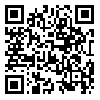BibTeX | RIS | EndNote | Medlars | ProCite | Reference Manager | RefWorks
Send citation to:
URL: http://jdisabilstud.org/article-1-770-en.html
Abstract
Background and objective: Written language disorder is one of the most common disorders among students. Correct and timely diagnosis of this disorder is considered as the initial and important step in its treatment, education, and research. The present study revieweed diagnostic methods and tools used for this disorder by researchers.
Methods: The research design was a descriptive-causal-comparative one. A library method was used for data collection. The research corpus consisted of all the previous research performed in the area of written language disorder. A total of 36 original studies were selected as the research corpus through targeted sampling. The diagnostic methods used to detect written language disorder were identified through investigating their research methodologies. Descriptive and inferential statistics were used to analyze the data through SPSS software.
Results: The results showed that domestic researchers have mostly applied criterion-based methods to diagnose the written expression disorder (30 diagnoses from among a total of 36 diagnoses). DSM-5 does not recognize this method to be valid because it fails to clarify all components of this disorder the results also indicated that the researchers had examined only one component of dictation in written language. Also, the level and rate of disorder were not compared with the community norms Moreover, the results indicated that no significant agreement existed in applying unified valid criteria.
Conclusion: Criterion-based diagnoses are thought-provoking and a great deal of confusion is observed in diagnosing the disorder based on the used criteria. Thus developing standardized tools to diagnose written language disorder is an essential suggestion.
| Rights and permissions | |
 |
This work is licensed under a Creative Commons Attribution-NonCommercial 4.0 International License. |




